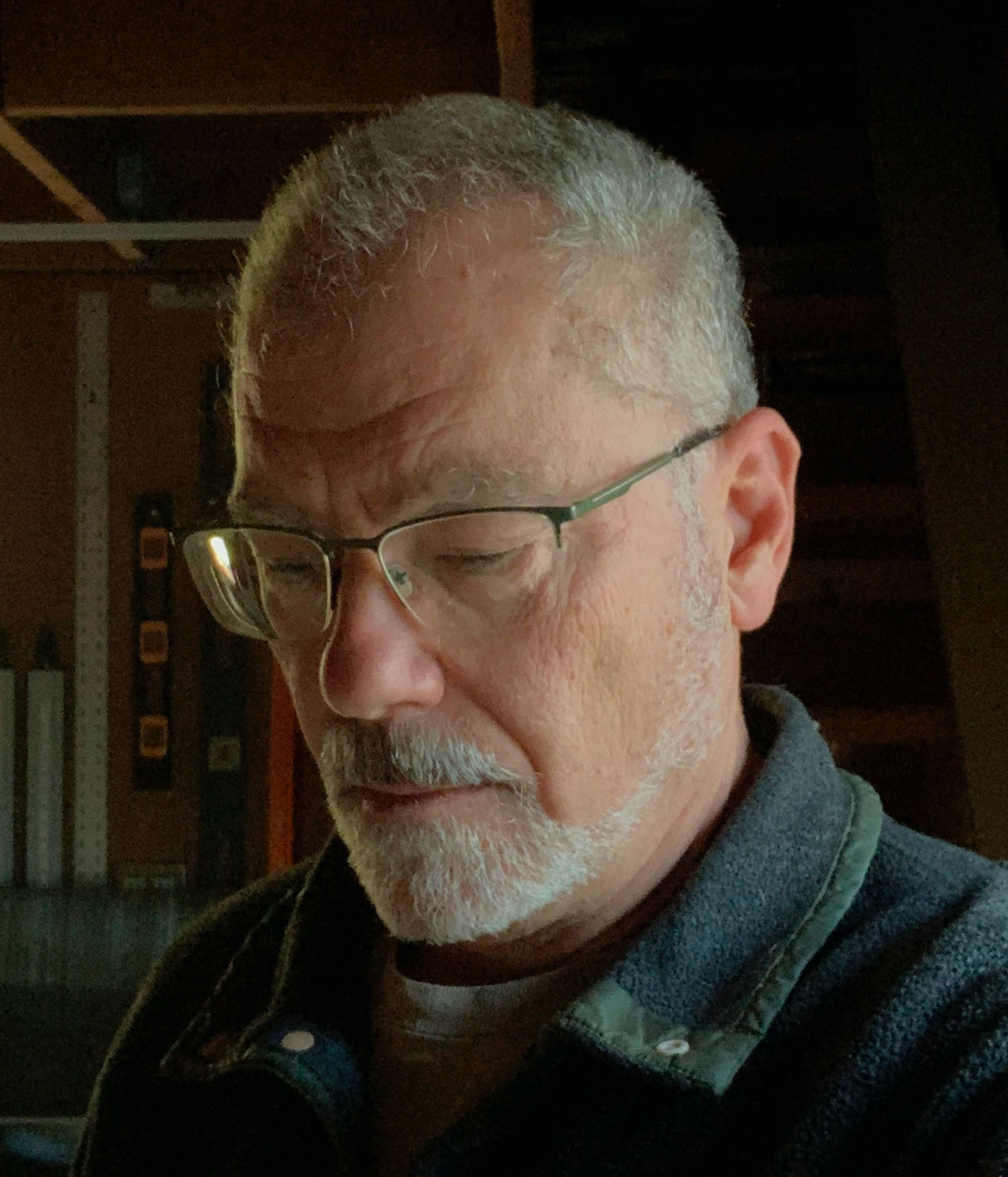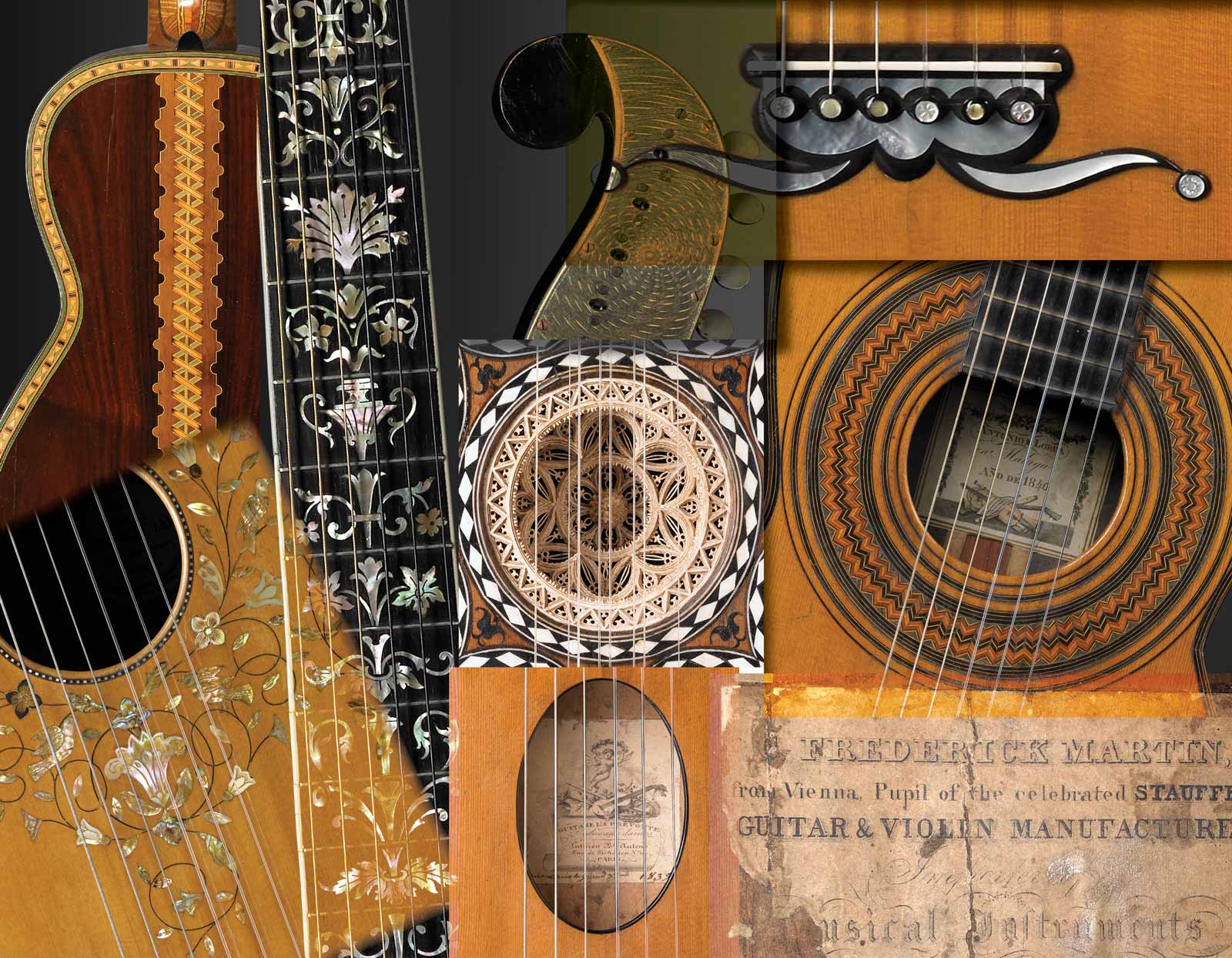About Photography
At the Beginning by David Bishop
Jeff and I began photography of these guitars to record the collection for his website project; front, back, side, heel, headstock and maybe some specific detail unique to each instrument – simple and straightforward (or so we thought). Once in front of the camera, each guitar began to reveal fascinating details of craftsmanship, materials, and shape that I became aware of as they stood suspended on set. A favorite quote from Richard Feynman came to mind: “I don’t know that much, but what I do know is that when you look close enough, everything is interesting,” and so it was with these guitars.

David Bishop
The first thing one sees is the flash of materials, the opulence of mother of pearl, the fine details of purfling and wood inlay, the intricate rosette; after that the proportions of upper and lower bouts, the bridge and headstock with clusters of wood and ivory tuning pegs. These are instruments all well anchored in their time, with the provenance of construction, wear and tear worn into the neck and soundboard, the fine craquelure of the varnish; all speak to the long history of their survival. These qualities demanded more than just a simple record.

Beginning with an early Fabricatore, the set evolved into one where light didn’t interfere with the elegance of these instruments. Maintaining the correct appearance of surface details, including the chatoyance of wood and varnish, the dimensionality and color of mother of pearl inlay, and the fine etched lines on brass and nickel meant minimizing lighting reflections. Other than an occasional bright spot or soft strip of white (usually on the neck), there are no reflections of any light source on any guitar. The only presence of light appears in the cast shadows and the reflection in the foreground. In order to support the lighting, the set was reduced to gradients of black and white, producing the minimalist set one sees in the book.
This was not an easy project, but I can honestly say it was not hard; demanding, yes, both in technical and aesthetic skills, but the effort, with the help of a good team of friends was the reward and the result is this book. The excellent design work by Bob and the always perceptive advice from Guy and Jeff kept the type, graphics, and images in intimate harmony.
The cameras used in the making of the images are probably considered legacy – my only equipment are two Hasselblad 500C and ELX medium format bodies with a most excellent 120mm ƒ/4 Makro Planar lens, all of which I’ve had since the 80’s. A PhaseOne H25 CCD back, using their CaptureOne software was used to shoot and develop 16-bit RGB-TIF files which were then edited and composited in Photoshop. In post-production, one of the unexpected but herculean tasks was removing each guitar out of its original background and onto the composited sets that appear in the book; as a result, I now have world class Path skills and proudly sport some impressive finger calluses.

X-ray of 1839 LaPrevotte
David Bishop: Photographer
David began his career in New York City, first as an assistant to several photographers, then as a staff photographer at Madison Square Garden for the New York Rangers and New York Knicks professional sports teams. He moved to San Francisco in 1973 and free-lanced before opening his own studio in 1979. Since then, he’s developed a steady clientele of high-tech companies, wineries, and design firms. He lives in San Rafael, California with his wife and two adult daughters who occasionally show up for dinner.
